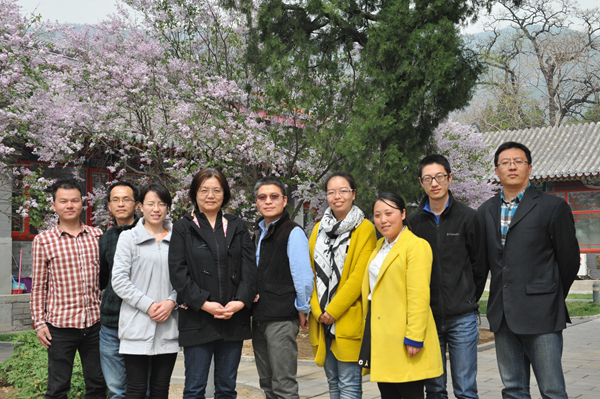Bee Resources and Breeding
Date:2015-09-21

Chief Scientist: AN Jiandong
Brief introduction of Chief Scientist:
An Jiandong, Master Supervisor, Professor
The head of Department of Insect pollination and Ecology, mainly research on bumblebees fauna ofChina, bumblebees conservation and pollination application. Published more than 50 papers on peer-reviewed journals, invented 8Chinapatents, and 5 achievements awarded at Provincial/CAAS level since 2005.
Objectives:
1) To better understand the status of biodiversity and biological characteristics of bumblebees and honeybees withinChinabased on a systematic investigation and assessment.
2) Try to reveal the molecular mechanism of important biological traits of these bees, such as the ecological adaptability of bumblebee species distribution, the egg laying of worker bumblebees, and honey high yield and mite resistance of honeybees
3) To breed improved honeybee varieties and select effective bumblebee species for commercial rearing and pollination
Research Focus:
1) Investigation and assessment of bumblebees and honeybees ofChina
2) Reveal the molecular mechanism of important biological traits of bumblebees and honeybees
3) Honeybees breeding and bumblebees selecting
Team Members:
AN Jiandong,
LUO Shudong,
ZHANG Hong,
LIU Yanjie,
SHI Wei,
DING Guiling,
LIU Zhiguang,
Publications (Selected SCI papers since 2011):
1. Huang J, An J*, Wu J*, Williams PH. Extreme food-plant specialisation in Megabombus bumblebees as a product of long tongues combined with short nesting seasons. PLoS ONE, 2015, 10(8): e0132358.
2. Zhang H, Huang J, Williams PH, Vaissière BE, Zhou Z, Gai Q, Dong J, An J*. Managed bumblebees outperform honeybees in increasing peach fruit set inChina: different limiting processes with different pollinators. PLoS ONE, 2015, 10(3): e0121143.
3. Williams PH*, Bystriakova N, Huang J, Miao Z, An J*. Bumblebees, climate, and glaciers across the Tibetan plateau (Apidae: Bombus Latreille). Systematics and Biodiversity, 2015, 13(2): 164-181.
4. Huang J, Wu J*, An J, Williams PH. Newly discovered colour-pattern polymorphism of Bombus koreanus females (Hymenoptera: Apidae) demonstrated by DNA barcoding. Apidologie, 2015, 46(2): 250-261.
5. An J*, Huang J, Shao Y, Zhang S, Wang B, Liu X, Wu J, and Williams PH*. The bumblebees of North China (Apidae, Bombus Latreille). Zootaxa, 2014, 3830(1): 1-89.
6. Xie Z*, An J. The effects of landscape on bumblebees to ensure crop pollination in the highland agricultural ecosystems inChina. Journal of Applied Entomology, 2014, 138, 555-565.
7. Williams PH, Brown MJF, Carolan JC, An J, Goulson D, Aytekin AM, Best LR, Byvaltsev AM, Cederberg B, Dawson R, Huang J, Ito M, Monfared A, Raina RH, Schmid-Hempel P, Sheffield CS, ima P, Xie Z. Unveiling cryptic species of the bumblebee subgenus Bombus s. str. world-wide with COI barcodes (Hymenoptera: Apidae). Systematics and Biodiversity, 2012, 10(1): 21-56.
8. Williams PH, An J, Brown M, Carolan J, Goulson D, Huang J and Ito M. Cryptic bumblebee species: consequences for conservation and the trade in greenhouse pollinators. PLoS ONE, 2012, 7(3): e32992.
9. Li J, Chen W, Wu J, Peng W, An J, Schmid-Hempel P, Schmid-Hempel R. A diversity of Nosema associated with bumblebees (Bombus spp.) fromChina, International Journal for Parasitology, 2012, 42, 49-61.
10. An J, Williams PH, Zhou B*, Miao Z, Qi W. The bumblebees of Gansu, Northwest China (Hymenoptera, Apidae). Zootaxa, 2011, 2865, 1-36.
11. Williams PH, An J, Huang J. The bumblebees of the subgenus Subterraneobombus: integrating evidence from morphology and DNA barcodes (Hymenoptera, Apidae, Bombus). Zoological Journal of the Linnean Society, 2011, 163, 813-862.